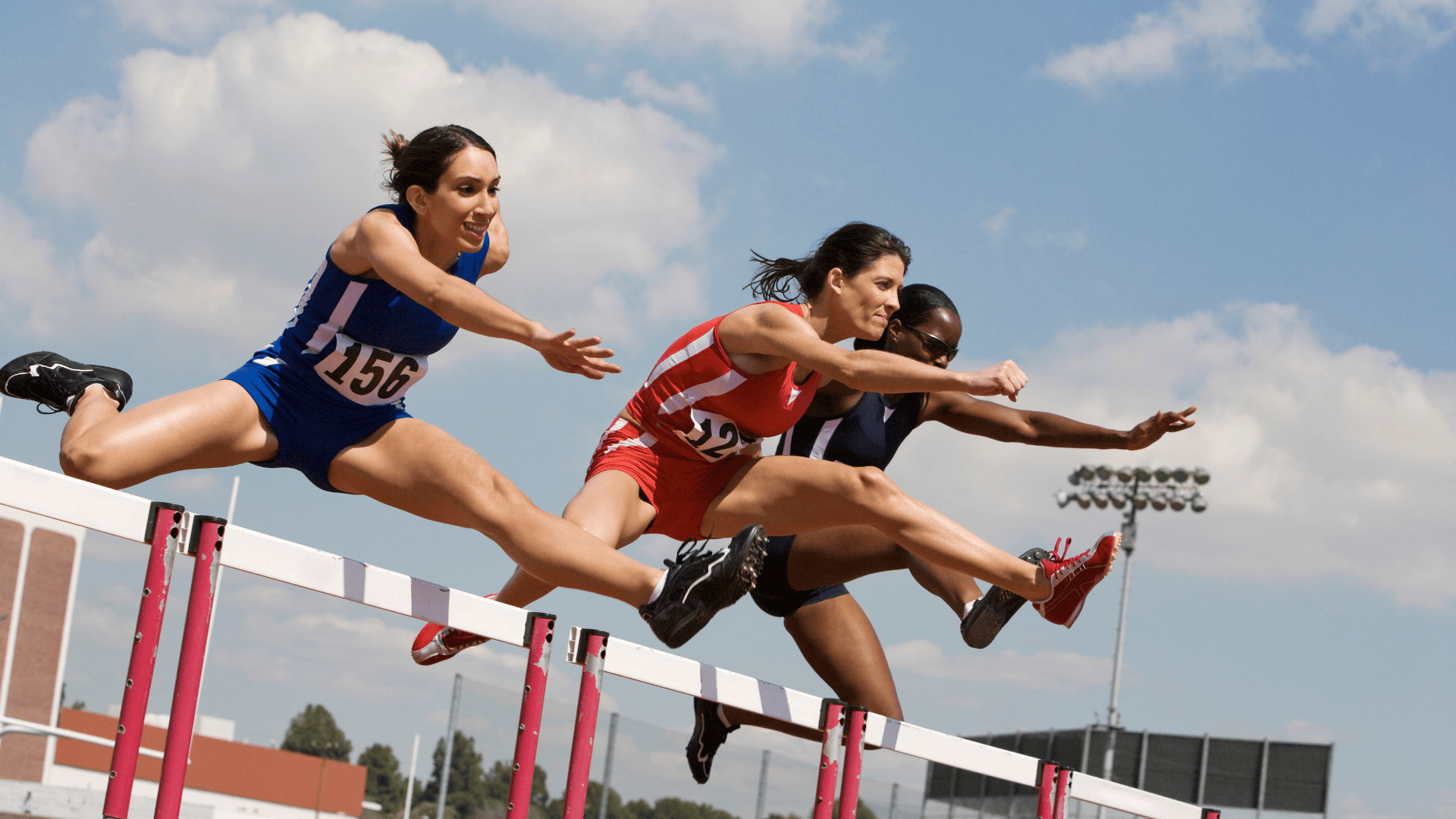How Student Athletes Can Prevent Knee and Spine Injuries This Fall

As fall rolls in, student athletes across Georgia are lacing up cleats, tightening shoelaces, and heading back to the field, court, or track. Whether it’s Friday night lights on the football field, intense soccer matches, grueling cross-country runs, or high-flying volleyball spikes, fall sports demand speed, power, and endurance. But they also bring with them a higher risk of injury—particularly to the knees and spine, two of the most critical and vulnerable areas in a young athlete’s body.
Every season, we see promising athletes sidelined by injuries that could have been prevented. Torn ligaments, stress fractures, slipped discs, and spinal strains are just a few of the common injuries that can derail a student athlete’s performance—and sometimes even their future in sports. The combination of high-impact movements, poor biomechanics, overtraining, and sometimes inadequate recovery routines makes knee and spinal injuries not just common, but dangerously under-recognized.
At Medici Orthopaedics & Spine, we understand what’s at stake. We are dedicated to helping student athletes not only recover from injuries but more importantly—prevent them from happening in the first place. Our approach centers around non-invasive, drug-free, and medically advanced treatments that prioritize long-term health and peak performance. We believe in empowering athletes with knowledge, guided therapy, and custom-tailored care plans to keep them strong, balanced, and ready to compete.
Common Causes of Knee and Spine Injuries in Student Athletes
Overtraining & Lack of Rest
In the quest for excellence, many athletes don’t allow their bodies enough time to recover. Training daily without scheduled rest days or proper recovery techniques can lead to overuse injuries, such as patellar tendinitis in the knees or repetitive stress injuries in the spine. Without adequate rest, microtraumas in the joints and muscles accumulate, increasing the risk of serious damage.
Poor Technique and Biomechanics
Improper form during running, jumping, tackling, or lifting can strain ligaments and compress the spine. Poor biomechanics—like collapsing knees during a jump or twisting the back awkwardly—often lead to conditions like ACL/MCL tears or herniated discs. Without correction, these issues worsen over time and can be difficult to fully reverse.
Muscle Imbalances & Weakness
When one muscle group is overdeveloped and others are neglected, it throws off alignment and stability. For example, weak glutes or hamstrings paired with strong quadriceps can place excessive strain on the knees. Likewise, core weakness can make the spine vulnerable to injury under athletic stress. Balanced strength training is key.
Improper Warm-Up or Stretching
Jumping into a game or drill without preparing the muscles and joints is a common mistake. Cold, tight muscles are more prone to injury. Without a proper dynamic warm-up and post-workout stretching routine, athletes increase their chances of strains, sprains, and joint issues.
Inadequate Protective Gear
Especially in contact sports like football or soccer, poorly fitted or worn-out gear can fail to protect vulnerable joints. Without proper bracing, padding, or footwear, the knees and spine are left exposed to unnecessary impact and torque forces.
Playing Through Pain
Young athletes often ignore early warning signs—brushing off discomfort or stiffness as “just soreness.” But pain is the body’s way of saying something’s wrong. Continuing to play without treatment can transform minor injuries into chronic or career-limiting conditions like spondylolysis or degenerative disc disease.
High-Risk Fall Sports & Injury Profiles
Football
Football is one of the most physically intense sports, with high-impact collisions and fast-paced play that put serious strain on the body.
- Spinal Compression & Ligament Tears: Tackles and pileups can compress the spine, leading to disc injuries or even spinal cord trauma in severe cases. Sudden changes in direction or hard landings also make ACL and MCL tears common, particularly in linemen and running backs.
- Poor Tackling Techniques: Improper form, like lowering the head during a hit or leading with the helmet, not only increases the risk of concussions but also places dangerous pressure on the neck and lumbar spine. Many spinal injuries in football are preventable with proper technique coaching and neuromuscular training.
Soccer
Though it's a non-contact sport, soccer is deceptively high-risk when it comes to knee and spine health.
- Rapid Pivoting & Twisting: Quick changes in direction while dribbling or defending can place extreme torque on the knee joint. ACL and meniscus tears are unfortunately frequent, especially among female athletes due to differences in anatomy and muscle activation patterns.
- Repetitive Impact: Constant running—often 5-7 miles per match—can lead to chronic lower back pain or stress-related injuries like spondylolysis if core and pelvic muscles aren’t properly conditioned.
Cross Country
Cross country may seem like a low-risk sport, but it comes with its own set of overuse and impact-related dangers.
- Overuse Injuries: The repetitive motion of long-distance running often leads to patellofemoral pain syndrome (runner’s knee) and sciatica, especially in athletes who increase mileage too quickly or don’t cross-train.
- Poor Running Mechanics or Footwear: Without proper gait training or supportive shoes, runners may develop asymmetrical stress on the knees and spine. Weak glutes, tight hips, or overpronation can compound the issue.
Volleyball
Volleyball is a fast-paced, explosive sport that stresses the knees and spine in very specific ways.
- Jumping & Landing: The frequent jumping involved in blocking and spiking creates repeated stress on the knees. Improper landing mechanics can lead to ACL injuries, jumper’s knee, and patellar tendinopathy.
- Hyperextension of the Back: Serving and spiking involve an arched back position that, over time, can lead to lumbar spine injuries, particularly if core strength and flexibility are lacking.
Prevention Strategies: Keeping the Knee and Spine Healthy
Strength & Conditioning
Strong muscles act as shock absorbers and provide critical support to the joints and spine.
- Core Stability & Lower Body Strength: A strong core stabilizes the spine during movement, while strong legs and hips reduce stress on the knees. Training these areas helps absorb impact and prevents dangerous overcompensation.
- Target Muscle Groups: Focus on developing the glutes, hamstrings, quads, and hip flexors, which all work together to protect both the knee joint and lower back.
- Sport-Specific Movement Training: Generic training isn’t enough. Athletes should condition in a way that mimics the physical demands of their sport—whether that’s quick lateral movements for soccer or explosive vertical jumps for volleyball.
Flexibility & Mobility Work
Tight muscles and stiff joints lead to poor movement patterns and increased injury risk.
- Stretching Routines: Incorporate daily flexibility work to maintain proper joint mobility and muscle elasticity, especially around the hips, hamstrings, and calves.
- Yoga & Dynamic Warm-Ups: These activities enhance spinal mobility and muscular control. A dynamic warm-up (instead of static stretching) before practices helps activate muscles safely and prepare the body for performance.
Proper Technique Training
How an athlete moves is just as important as how strong they are.
- Safe Movement Coaching: Teaching proper mechanics—like how to land from a jump, pivot safely, or tackle with correct form—is essential. These skills protect the joints and spine from excessive strain or improper load.
- Video Analysis: Sometimes, athletes aren’t aware of poor movement patterns. Coaches and physical therapists can use video footage to pinpoint flaws and retrain safer movement habits.
Rest & Recovery
Without rest, the body can’t rebuild and strengthen after intense training.
- Sleep is Critical: Athletes need 7–9 hours of quality sleep for hormone regulation, tissue repair, and mental focus.
- Planned Rest Days: Schedule 1–2 rest or low-intensity days per week to prevent overuse injuries and burnout.
- Post-Training Recovery: Use ice baths, compression sleeves, stretching, foam rolling, and stay hydrated to help the body flush out inflammation and speed healing.
Preseason Physicals & Screenings
You can’t prevent what you don’t know.
- Identifying Muscle Imbalances & Joint Instability: A preseason evaluation from a sports medicine specialist can uncover weaknesses or movement deficits before they lead to injury.
- Baseline Assessments: These allow for personalized training adjustments, ensuring the athlete’s program aligns with their individual biomechanics and sport-specific needs.
Play Smart, Stay Strong
Preventing injuries doesn't begin after something goes wrong—it starts with preparation, education, and smart training habits. Whether your student athlete is gearing up for their first season or is a seasoned competitor, taking proactive steps to protect the knees and spine is crucial for both short-term performance and long-term health.
Too often, we see athletes push through pain or ignore early warning signs until the injury becomes serious. But it doesn’t have to be that way. Early intervention, proper technique, and personalized care can help athletes stay in the game and avoid unnecessary setbacks.
At Medici Orthopaedics & Spine, we specialize in helping student athletes prevent, manage, and recover from injuries in the least invasive and most effective way possible. Our team is passionate about keeping young athletes active, safe, and performing at their best—all without relying on unnecessary surgeries or medications.
✅ Schedule a consultation today with one of our experienced specialists.
📞 Call us at +1-844-328-4624 🌐 Visit us online: medicimedicalarts.com
📍 Convenient locations in Marietta, Snellville, Kennesaw, and Buckhead









